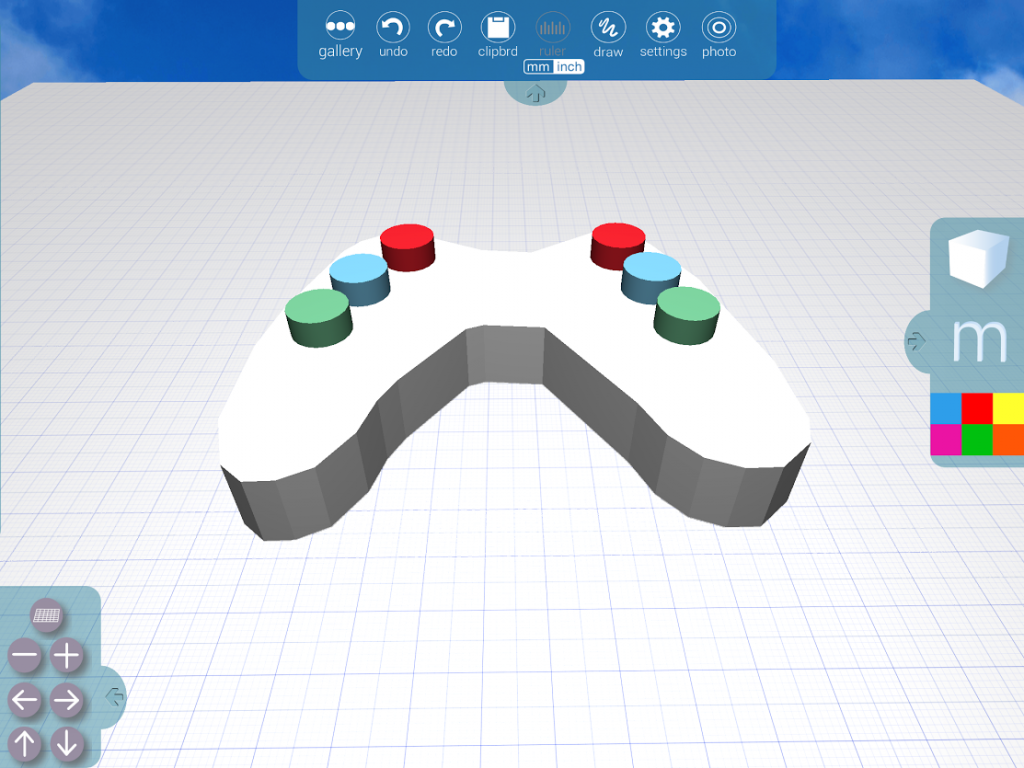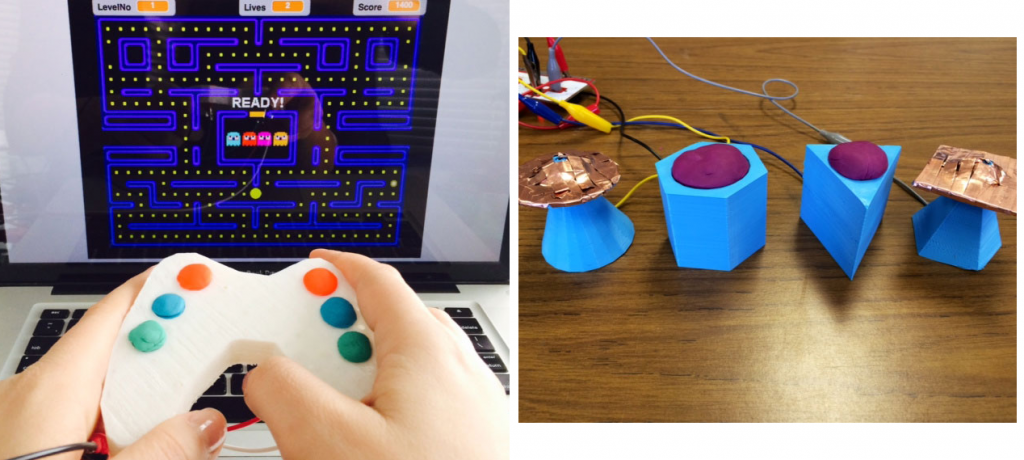I truly believe that there will come a time, probably not too far off in the future, where we will all be 3D printing intricate electronic devices from the comfort of our own homes. We’ve seen companies like Voxel8 and Functionalize push the envelope is this area already, and the implications of such technology could be staggering, opening up the window for cheap electronics and an incredible amount of innovative design.
Another company called Inventery Inc., which we’ve covered in the past because of their intuitive 3D modeling app, Morphi, is combining 3D printing with Play-Doh to enable some pretty cool new applications for the technology.
For those of you who were unaware, Play-Doh is not only incredibly fun to roll around in your hands and mold into things, but it’s actually conductive as well. This means it can be used to  complete a circuit. When the team behind Morphi realized this, they knew that they could come up with a fun, easy, and cool new design using their mobile app, 3D printing, Play-Doh, and an electronics kit called MaKey MaKey.
complete a circuit. When the team behind Morphi realized this, they knew that they could come up with a fun, easy, and cool new design using their mobile app, 3D printing, Play-Doh, and an electronics kit called MaKey MaKey.
“MaKey MaKey contains a small circuit board (which attaches to a computer through a USB cable) and alligator clips (with each end attaching to the circuit board and each other end to conductive material),” explained the Inventery team to 3DPrint.com. “MaKey Makey can be used with any online websites or other programs using arrow keys as well as with Scratch, a free programming language and online community developed at MIT with a large library of pre-existing MaKey MaKey projects.”
The project? A 3D printed functional video game controller!
For those of you not familiar with Inventery’s Morphi app, it allows its users to simply draw a 2D object on their smartphone or tablet’s screen, and quickly turn that object into a 3D printable model.
“We used the Draw tool in Morphi to design a simple game controller with curved edges,” explained the team. “We extruded and re-sized our hand-drawn shape in Morphi and then used cylinders from Morphi’s Shapes library to subtract 6 large holes for the controller buttons. However, we were careful not to subtract completely through the bottom of the controller. We then made one smaller hole within each controller button hole which was subtracted through the bottom so each alligator clip (from the MaKey MaKey kit) could be placed securely from underneath and not fall out while in play.”
Next it was time to print the controller out on their Ultimaker 3D Printer. Because the team wanted it to be comfortable on their hands during extensive play, they ended up printing it with NinjaFlex’s rubber-like filament. Once printed, they filled all six holes with Play-Doh, attached the MaKey MaKey board to their computer via a USB port, and finally connected the alligator clips to both the board and the Play-Doh within each button hole from beneath the controller. Incredibly, the controller works like a charm with any game that uses a computer’s keyboard arrow keys. Below you will see the team at Inventery testing the 3D printed controller out by playing PacMan. Unbelievably, those six buttons being pressed are Play-Doh.
The team at Inventery continue to think outside the box when it comes to 3D modeling and printing. They have also used Play-Doh and MaKey MaKey to create other electronics, such as the MaKey-Morphi Band, which uses a similar creation method as the controller but instead of playing games this creation plays music.
“In creating this project, we wanted to show how easy and fun it could be to design and print models that could be used with basic electronics,” explained the Inventery team. “We were aiming for an abstract, minimalist style and quickly designed a few instruments using cones, spheres, cylinders and a hexagon [all which were 3D printed]. The instruments were mostly hollow, but had holes running through the tops and sides for the MaKey MaKey cables and conductive material. We printed 4 instruments (about 2 inches high) on an Ultimaker 2 using the quick print settings in Cura.”
Just like with the game controller they used Play-Doh to complete the circuits, but this time also experimented with conductive tape. Below you will find a video of the finished electronics in action:
Let us know if you have used the Morphi app to create anything as useful as the Inventery team has. Discuss in the Morphi 3D printed electronics forum thread on 3DPB.com.
Subscribe to Our Email Newsletter
Stay up-to-date on all the latest news from the 3D printing industry and receive information and offers from third party vendors.
You May Also Like
Profiling a Construction 3D Printing Pioneer: US Army Corps of Engineers’ Megan Kreiger
The world of construction 3D printing is still so new that the true experts can probably be counted on two hands. Among them is Megan Kreiger, Portfolio Manager of Additive...
US Army Corps of Engineers Taps Lincoln Electric & Eaton for Largest 3D Printed US Civil Works Part
The Soo Locks sit on the US-Canadian border, enabling maritime travel between Lake Superior and Lake Huron, from which ships can reach the rest of the Great Lakes. Crafts carrying...
Construction 3D Printing CEO Reflects on Being Female in Construction
Natalie Wadley, CEO of ChangeMaker3D, could hear the words of her daughter sitting next to her resounding in her head. “Mum, MUM, you’ve won!” Wadley had just won the prestigious...
1Print to Commercialize 3D Printed Coastal Resilience Solutions
1Print, a company that specializes in deploying additive construction (AC) for infrastructure projects, has entered an agreement with the University of Miami (UM) to accelerate commercialization of the SEAHIVE shoreline...






























